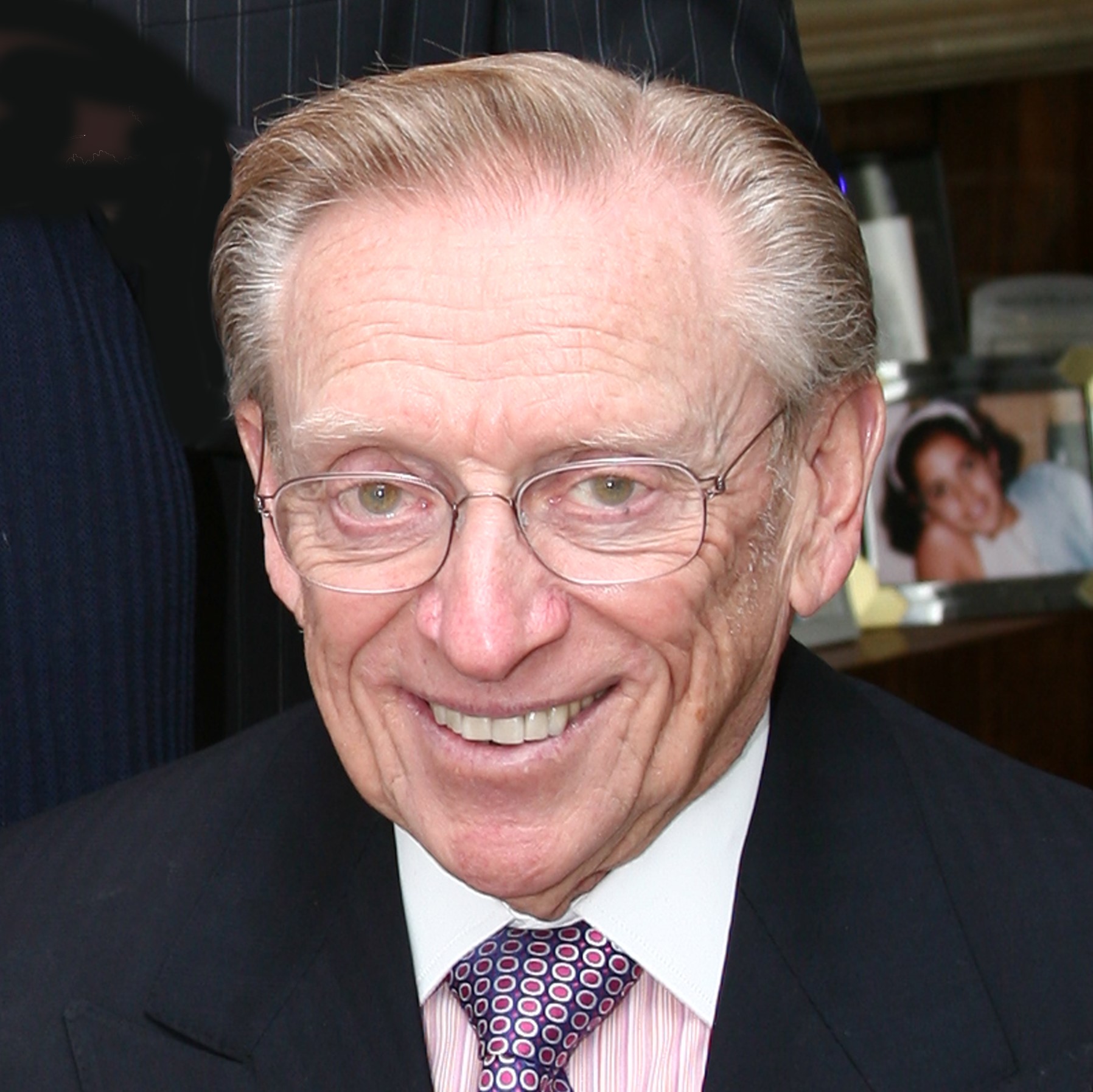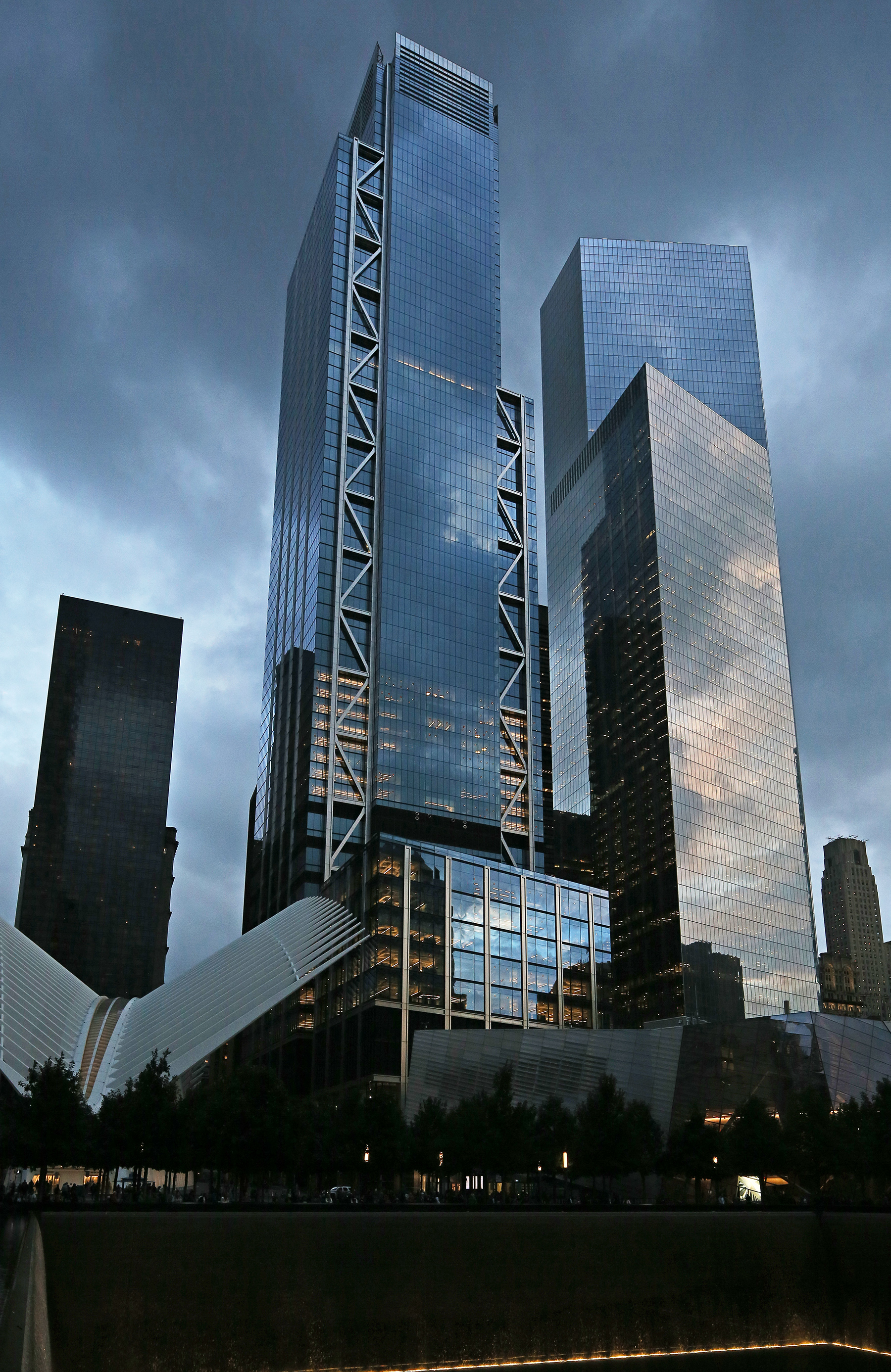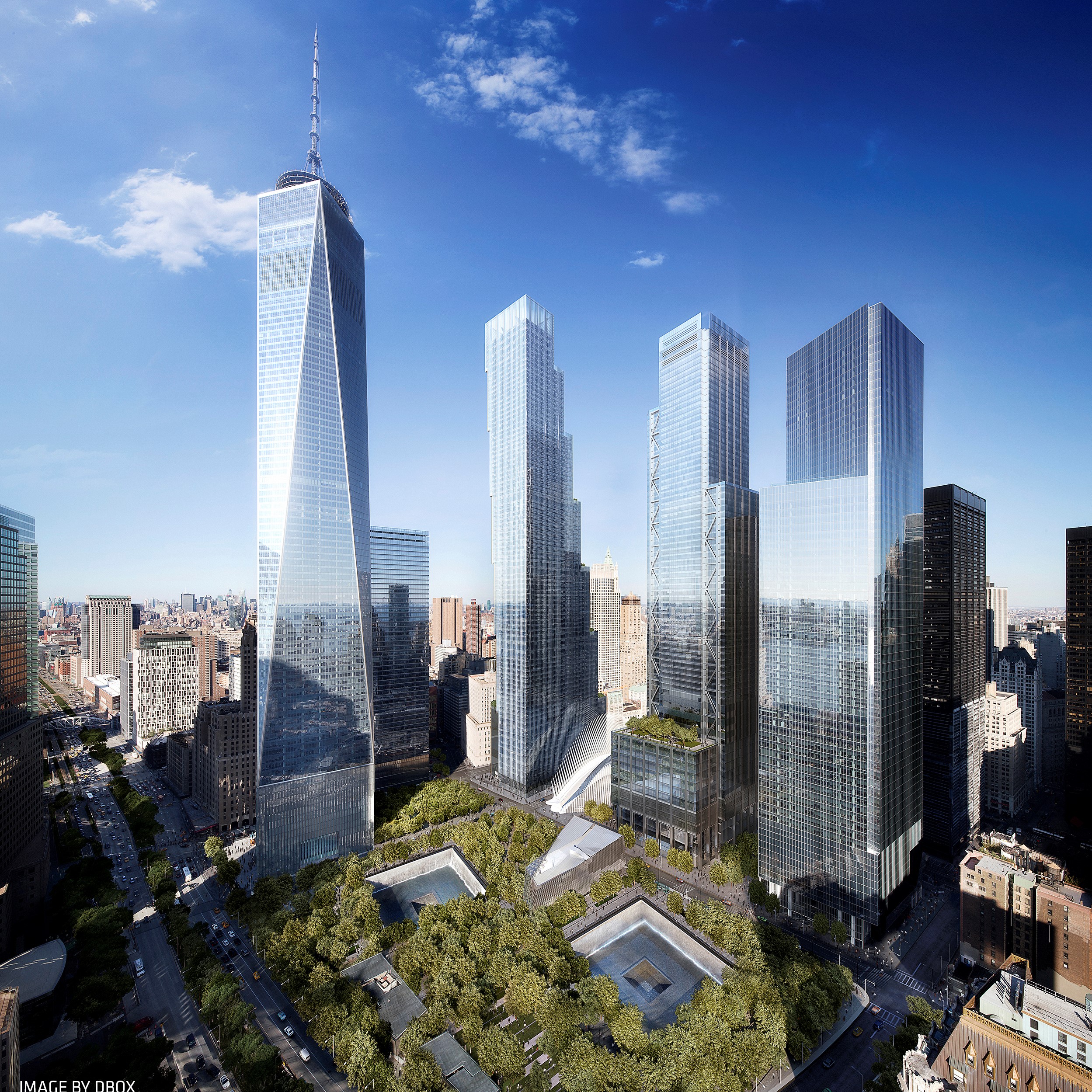Executive Spotlight: Larry Silverstein, Silverstein Properties
The veteran owner and developer shares insights on rebuilding the World Trade Center, his new financing venture and his long and distinguished career in real estate.

Larry A. Silverstein, Chairman, Silverstein Properties
Commercial Property Executive will be honoring legendary New York developer Larry Silverstein with a Lifetime Achievement Award, as part of our annual Executives of the Year awards in December. In advance of this honor, we spoke to Silverstein about his life’s work, including his latest billion-dollar foray into construction lending, the rebuilding and nearing completion of the World Trade Center in 2022 and his first book, which will go behind the scenes on one of the most important public-private ventures in U.S. history.
With the opening of 3 World Trade Center in June, the rebuilding of the World Trade Center complex is nearly complete after 17 years. What’s left?
Larry Silverstein: The only thing left is to complete the construction of the performing arts center. If you look out our windows, you see the lower steel for the super structure that is now rising. The completion of the Ronald O. Perelman Performing Arts Center at the World Trade Center is expected to be complete either at the end of 2021 or the beginning of ‘22. It will house a 500-seat theater, a 400-seat theater and a 300-seat theater. It can be utilized as three separate venues or one single venue of 1,200 seats. It will also provide for corporate use, so it will be an exciting addition to the World Trade Center rebuild and something that did not exist prior to 9/11. But like just about everything else down here, it’s a metamorphosis. It’s just about complete, and when the last tower goes up—Tower Two—the rebuild of the World Trade Center will be completely behind us.
I suppose Tower Two is a major transaction. Its cost will be in excess of $4 billion, so it’s consequential—as consequential as anything built at this site. The performing arts center, about $400 million, pales by comparison in terms of size. One is $400 million and the other is $4 billion. It’s an interesting composite when you put the two of them together. But that’s really what remains to be done at the Trade Center. Once that’s finished, our job is complete. Then we’ll have to find something else to do with our time.
It sounds like you’ve already found one thing to do with your time with Silverstein Capital, which you launched in early October to fill the gap in construction lending. Have any loans closed yet?
Silverstein: There’s a good deal of activity on that front. We have a significant amount of capital available for financing purposes—construction loans, particularly—in the metropolitan area of New York. The opportunities here are significant. They’re real. Michael May is heading that thrust on our behalf. He’s seasoned. He’s knowledgeable. He’s very successful, having done this for most of his life.
I suspect it won’t be long before we announce our first transaction and probably go onto many others as time progresses. It’s interesting. It’s exciting. What we simply decided to do was to utilize the very considerable talent that we have internally here at Silverstein Properties. We have the ability to build high-rise buildings of very significant complexity and size and cost. We’ve done every single aspect of them. We’ve been on the hotel side. We’ve been on the retail side, on the office side, on the construction side. You name it, we’ve been through it all. To use the talent now for purposes of providing construction loan financing makes all the sense in the world.
You were born during the Great Depression and have lived through many economic cycles, including, of course, 9/11 and the Great Recession. What’s your advice to young commercial real estate professionals on how to manage through the ebbs and flows of the economy?
Silverstein: There are some people who believe we were present for the panic of 1897 because we go back so far.
Nevertheless, experiencing these ups and downs teaches you a lot. And there are many young people today who really weren’t around or weren’t really fully cognizant of what was transpiring in some of these earlier debacles because, if they were, they would be far more experienced and far more sensitive to the realities that affect our lives in a very positive or negative way.
When things go bad, they tend to go very bad. Many, many times you’ve heard people say that the banks are always there for you. There are others who say, the banks are there for you when you don’t have a need. When the need occurs, so often you’ve heard people say the banks seem to disappear. What happens? Like everything else, when times are bad, the banks tend to withdraw, understandably, and that’s when people have their greatest need—when times are difficult. People have to be sensitive to the realities of life, the ebbs and flows that develop at these times. Conservatism is always intelligent and necessary.
Can you describe your childhood growing up in Brooklyn and the impact it had on your career?

3 World Trade Center & 4 World Trade Center
Silverstein: I grew up in Brooklyn, living on the seventh floor of a six-story walk-up. It was not a very pretty time, not a very happy time. Dragging the ice up for the icebox was—let me tell you—an experience. Life was difficult. It was tough. It was not very pretty at that time. It was a hand-to-mouth existence and it was difficult at best.
Making it through those times was pretty tough and it taught you the facts of a dollar and the importance of not squandering but saving once you made something. It was a time of great learning. There was so much to affect our world as it existed at that time. There was so little available and so much to do and so little with which to do it all. It was not the greatest of times.
Sometimes you get fortunate in life, which I did. Our world improved and I was able to take advantage of some of the benefits that befell us as a result. It’s been a long life. It’s been an interesting one. It was not the prettiest at all times. But happily, we are where we are today and, thankfully, we can look back at it all and say we are happy to have made it through.
Who was the most influential role model in your childhood? Who did you look up to?
Silverstein: Clearly, my father, who taught me to treat everybody as I would expect to be treated. Treat everybody with absolute respect. Treat your elders with great sensitivity because they were your elders. They’ve lived longer. They’ve been around more. And become a good listener and hear what people have to say. That’s something that I think back to from my earliest days and appreciate the good that my father was able to teach me.
How did it ultimately fit into your career in commercial real estate?

Rendering of 2 World Trade second from left.
Silverstein: My father made a living as a real estate broker [in lower Manhattan] but it was an extremely difficult time… [and] the commissions were few and far between. Very often, he had to share them with other brokers.
Life was very difficult and it became obvious to me that, as brokers, we could not really make a decent living. By this time, I’d married and wanted to have a family. I realized we had to change what we were doing as brokers and do something that was more advantageous, where you could make a better living—and that was become an owner.
I remember my father saying to me: “We have no capital. We have no money. We have no resources. How are we supposed to become an owner?”
Just at that time, there were two people in New York who had just acquired the Empire State Building: a gentleman by the name of Lawrence Wien and another by the name of Harry Helmsley. They acquired the Empire State Building by going out and offering 5,000 investors an opportunity to become a limited partner in the ownership of the Empire State Building. They put it together with small amounts of capital—I think $5,000 each (share)—for which they would acquire the building. It was the most amazing thing. I looked at that and I said to myself and to my father: “If they can do that with their capital, why can’t we?”
My father looked at me and said, “You can figure it out?” I said, “I sure as hell will try.” And we acquired our first building, a small group of investors—20 people—and we each put in $10,000. With that we bought our first piece of real estate, without knowing much of what to do or how to do it. It was really trial and error. We somehow managed, incredulously, to succeed.
We achieved higher rents in the building than we anticipated being able to achieve and, ultimately as a result, were able to refinance the building and give everybody back their money and still retain ownership of the real estate. And with that, everybody said: ‘Hey, you’re successful. Buy another piece of real estate.’ We now had extra money with which to do it and so we found a second piece, then a third, a fourth. Finally, the banks, who would never lend us anything because we had no assets against which to lend—we had no collateral—agreed to give us whatever we needed in order to buy larger buildings. And by golly, it was really extraordinary being able to do things we never could do before—acquire larger buildings, renovate them, and then, ultimately, construct them. It was a sea change in our lives as a result. The rest is history.
Timing is everything?
Silverstein: It sure helps.
Can you talk a little about your work building at the World Trade Center site since 1980 when you won the bid to build 7 World Trade Center?
Silverstein: The Port Authority decided it would not build itself and leased the site out to others who might build it instead. I succeeded in winning the bid to lease the site to build a million-square-foot building on the site. We were able to convince the Port Authority and Con Edison, which had an operating substation on the site, to enable us to build a 2 million-square-foot building and, ultimately, 7 World Trade Center became the occupant of that parcel. We successfully leased (the land) and built it and then leased (the building) and got very fortunate from a timing standpoint. And then of course 9/11 happened. The building was the last building to come down in 9/11, and in terms of rebuilding the Trade Center, the first to go back up after 9/11, and we finished it in ‘06. That became the precursor to the subsequent buildings that went up here in the Trade Center—namely, Tower 4, Tower 3, Tower 1, the Oculus, the memorial park, the memorial museum, now the performing arts center, and, ultimately, Tower 2. The completion of Tower 2 will finish rebuilding the trade center.
What did it teach you?
Silverstein: There are lessons to be learned from the experiences I’ve had in just the last 17 years since experiencing 9/11 that you could go on for days or weeks to talk about it. I put them into a book I’ve started and will complete with the last of the buildings to be built here in the Trade Center. Then we’ll publish it. I think it’ll be a piece that’ll be ideal material for future people who want to involve themselves in public-private partnerships, of which this is one.
It’s been exciting. It’s been frustrating. It’s been stimulating. It’s been rewarding. It’s been—you name it. Every conceivable reaction that you could possibly experience in life, I’ve experienced. The book will cover—hopefully 22 years—of the rebuilding of the Trade Center. There was so much to think about and write about when I found myself in the middle of the rebuilding of the Trade Center after 9/11. So many issues that surface then and there that I’d never dealt with before in my life.
Is 87 the new 67?
Silverstein: I’ll be in a better position when I make 97.
Images courtesy of Silverstein Properties







You must be logged in to post a comment.